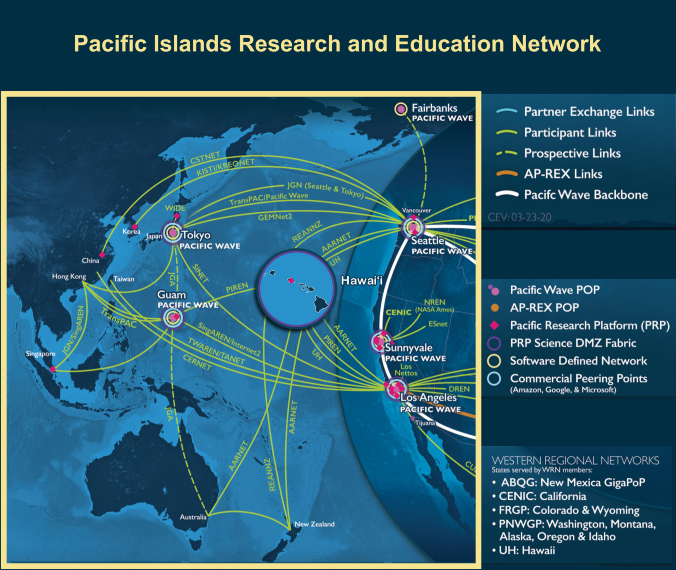
The National Science Foundation (NSF) has awarded the University of Hawaiʻi a five-year, $4.5 million grant to support international research and education network connections in and across the Pacific.
This project will build on the success of prior work and NSF investments into UH’s past four International Research Network Connections awards that have supported submarine fiber connections for involving Australia, New Zealand, Guam, American Samoa and the U.S. mainland via Hawaiʻi.
“UH has a long and rich history as a leader in the development of the Internet and in our region,” said David Lassner, UH president and principal investigator for the grant. “The first international Internet connection to Australia was implemented over 30 years ago as a partnership between AARNet and UH, and they are our partner today. UH is still uniquely positioned to lead this effort as the premier research institution in the Pacific.”
The project will support U.S. costs of the SX-Transport backbone consisting of multiple 100 gigabit per second (Gbps) links that connect Australia, Hawaiʻi and the U.S. mainland. It also supports the 100 Gbps Pacific Islands Research & Education Network backbone connecting Guam, Hawaiʻi and California, and the newest partnership with the Research and Education Network New Zealand connecting New Zealand to Hawaiʻi and points beyond.
The project will provide maintenance and support for the open research and education network exchange point built during the prior project by UH in Guam, the Guam Open Research and Education eXchange (GOREX). The GOREX is poised as a critical nexus on fiber optic systems in both North-South (Japan, Australia) and East-West (Singapore, Hong Kong, Hawaiʻi, California) directions. The project will enable major scientific advances among these partners and others in the areas of astronomy, oceanography, coral reef research, high energy physics and more.
The project also seeks opportunities to bring Pacific Islands that are increasingly connected with fiber optic cable systems into the global research and education network fabric that joins thousands of colleges, universities and related entities around the world. Connectivity is viewed as critical infrastructure for the Pacific Islands in order to accelerate initiatives in education, research, health and economic development through partnerships with island leaders from higher education, government and telecommunications.
—By Maria Dumanlang
